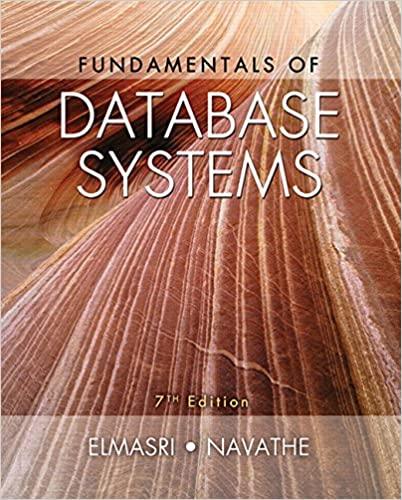Question
Let R (A1, A2, A3, A4) be a relation and F be a set of functional dependencies among attributes {A1, A2, A3, A4} such that:
Let R (A1, A2, A3, A4) be a relation and F be a set of functional dependencies among attributes {A1,
A2, A3, A4} such that:
• {A1, A2, A3, A4}+ = {A1, A2, A3, A4}
• no proper, nonempty subset of {A1, A2, A3, A4} is equal to its closure with respect to the set F
of functional dependencies.
What is the set F of functional dependencies in R (compatible with the two conditions above) ?
Question 2:
Consider the following database schema: R(A, B, C, D, E, F, G, H) with the set of functional
dependencies { F-> A, AC-> E, E-> B, BG -> F, BE -> D, BDH -> E, D -> H, CD -> A, A E-> , AD -> BE}
2.1 Find the candidate keys of this schema. Show the full details of your work.
2.2 Find a BCNF decomposition of this schema (list both the relations and the corresponding set of
functional dependencies for each of the relations in the decomposition).
2.3 Find a 3NF decomposition of this schema (list both the relations and the corresponding set of
functional dependencies).
Question 3:
Consider the schema with attributes ABCD and the following set of functional dependencies: { C -> AD,
AB -> C}. Produce a lossless BCNF decomposition for this schema. Is it dependency-preserving?
Explain why. If your BCNF decomposition is not dependency preserving, provide a dependency preserving 3NF decomposition.
Step by Step Solution
There are 3 Steps involved in it
Step: 1

Get Instant Access to Expert-Tailored Solutions
See step-by-step solutions with expert insights and AI powered tools for academic success
Step: 2

Step: 3

Ace Your Homework with AI
Get the answers you need in no time with our AI-driven, step-by-step assistance
Get Started


